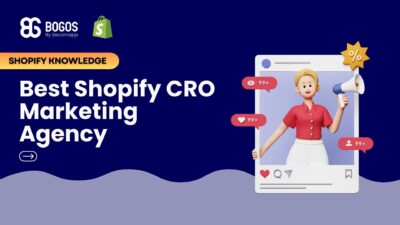
Hiring a Shopify CRO Agency: 7 Experts Worth Your Budget
If you are heading into 2026 planning bigger campaigns, now is the right time to tighten your onsite conversion....
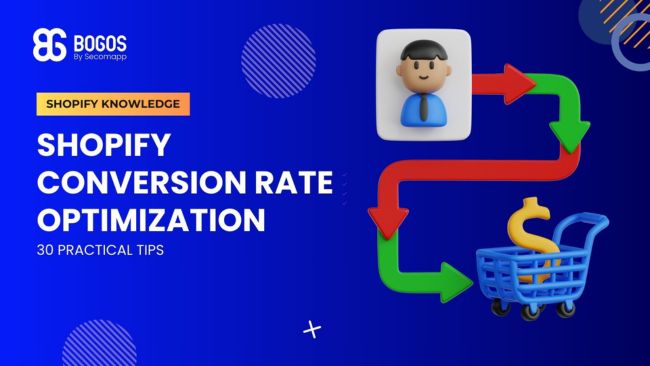
Digital Marketing Specialist
The Shopify conversion rate measures the percentage of visitors to your online store who complete a purchase. The higher the rate, the more it shows that you have done a great job with Shopify conversion rate optimization to benefit your business.
At the core, the main goal of this optimization process is to cater to customers in a way that brings profit to your store. Properly optimizing crucial factors helps reduce bounce rates and enhance customer satisfaction, contributing to store growth.
This article consists of 30 practical strategies and tips for merchants to elevate their sales and marketing plans.
This part provides a quick overview of what you need to know about Shopify conversion rate optimization.
The standard formula to calculate your shop’s conversion rate looks something like:
Conversion rate = (Number of sales / Number of visitors) x 100
In specific:
Example:
If you generated 100 sales and 2,000 visitors a month, the conversion rate would be:
Conversion rate = 50 / 2000 x 100 = 2.5%
A profitable conversion rate for Shopify stores usually ranges from 2-4%, but this will vary by industry.
A website with slow loading times may cause visitors to run short of patience, resulting in higher bounce rates and lower conversions. Make sure you optimize the image sizes, use faster hosting, and minimize app usage to enable fast-loading website performance.
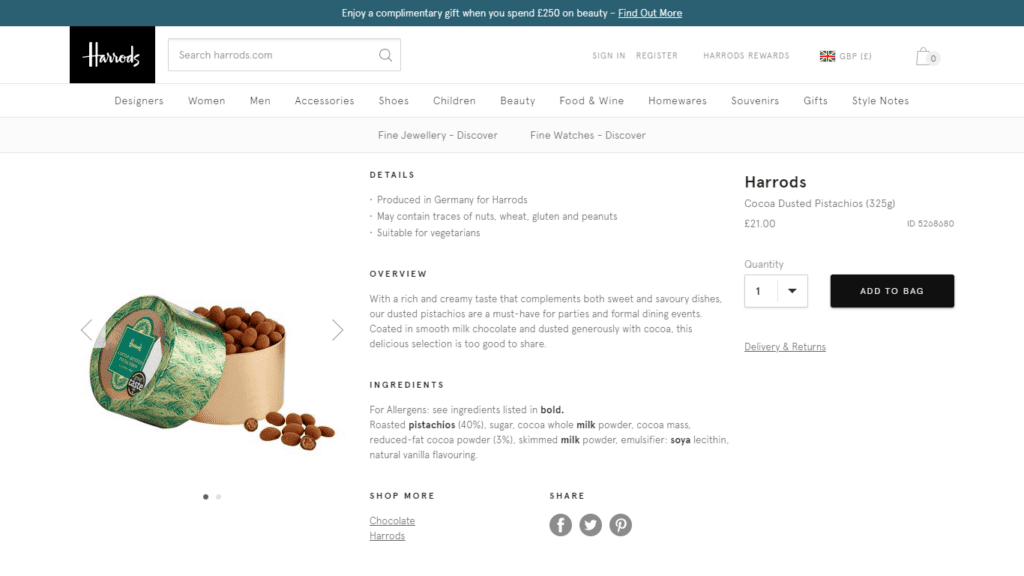
Most customers are put off by poorly written product descriptions and low-quality images. Consequently, they cannot fully understand the items, leading to lost sales.
For that reason, use high-quality media and persuasive, detailed product descriptions.
Shoppers are likely to purchase to get incentives like discounts and other promotions. Lacking this factor may lead to lower conversion rates.
Cart abandonment often happens due to a complicated, multi-step checkout process. This procedure should be quick and simple, with high automation for more convenience.
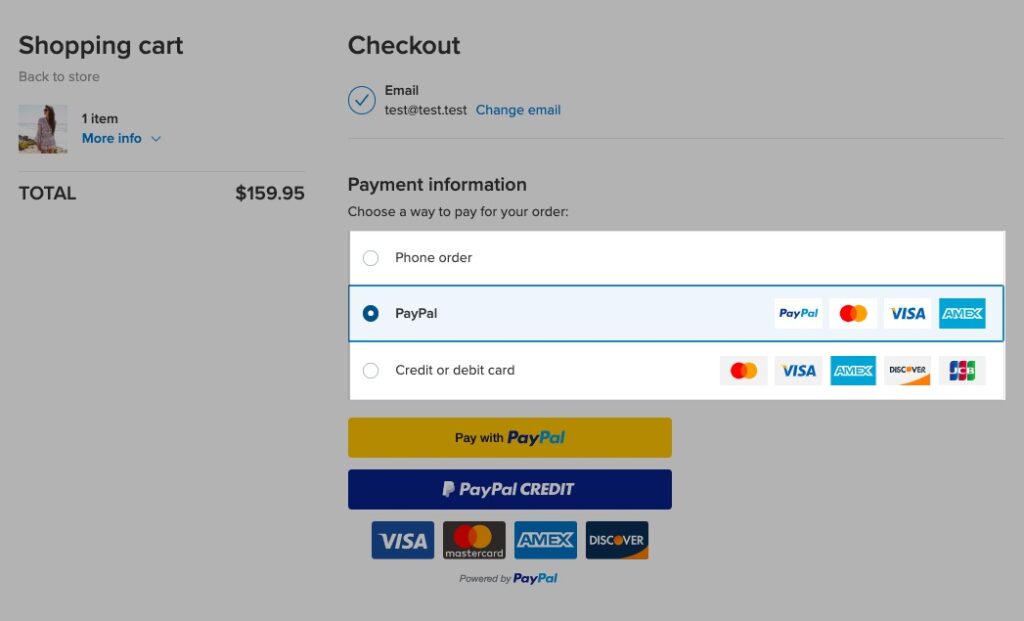
Another reason you might fail in Shopify conversion rate optimization is the lack of diverse payment options. Customers are more likely to convert if they see a series of trusted and secure payment methods to pay for their orders.
Read more: Best Shopify Apps to Increase Conversions in 2025
A common customer journey when visiting an online store consists of these stages:
Traffic sources → Homepage → Product pages → Checkout page → Thank you page
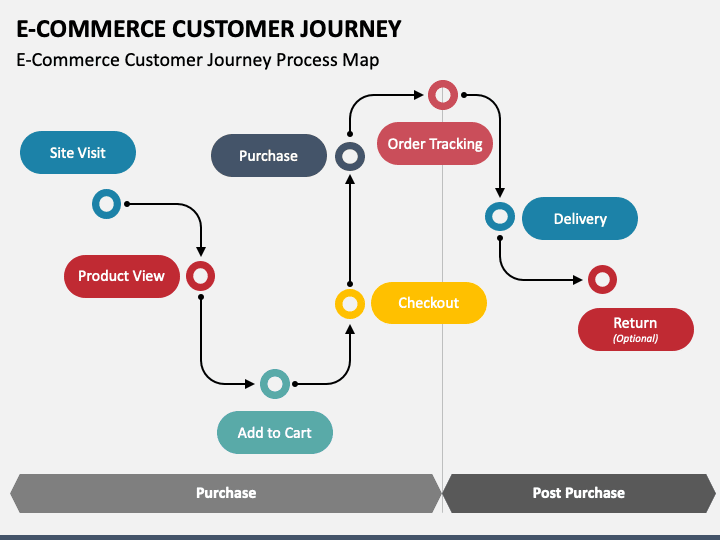
To optimize Shopify conversion rate, merchants need to optimize each step to ensure the best customer experience. In the next section, we will recommend helpful tips and practices for you to achieve this goal.
The list consists of 30 practical and effective strategies for your store, all combined to make the most of each stage and boost conversion rates:
The homepage is the main location that visitors are redirected to when viewing your website.
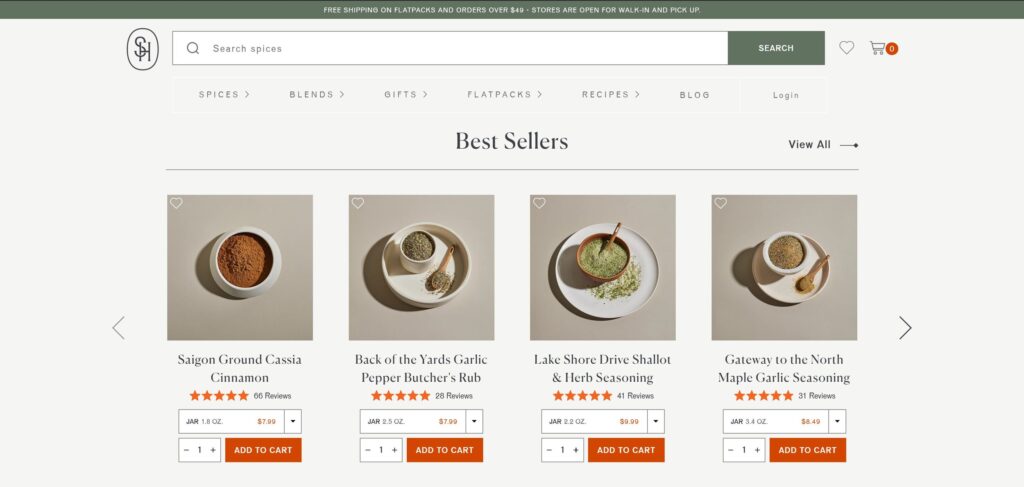
What kind of products should you display on the homepage to capture attention?
In this case, best-selling goods or categories are fail-proof options. They represent your business strength through a journey of selling well and satisfying customers.
Consider grouping them with other relevant or complementary items at discounted prices. It helps boost sales altogether while satisfying customers with valuable bargains.
Highlighting top sellers on your homepage also helps guide new customers who may get overwhelmed by an extensive catalog. With only one click, they can easily find in-demand products and be encouraged to browse the shop.
As a result, it extends their discoverability to other available items. It also contributes to Shopify conversion rate optimization.
An excellent way to impress your visitors on the homepage is to use visually appealing mediums, especially banners of all sizes. This method also works wonderfully during promotional campaigns, enhancing customer engagement.
Maximize their visibility by placing them in prominent locations on the homepage, such as:
A full-width banner is best for announcing new arrivals, major promotions, and top sellers. Since it is the first thing visitors see, it delivers high-impact messages.
This part of your site is visible without scrolling. It is suitable for key call-to-actions (CTAs), such as limited-time offers and free shipping.
You should display ongoing deals and sitewide announcements. They remain visible as buyers scroll through the page without being intrusive.
As some visitors scroll to the bottom of a page for more information, a subtle banner with shipping discounts or subscription offers can be intriguing.
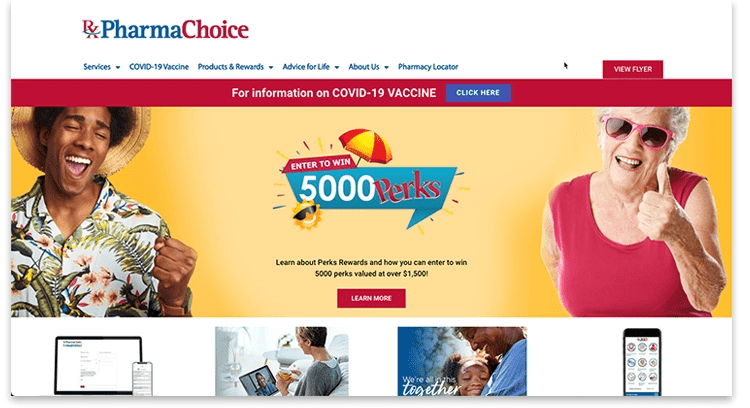
Besides showcasing top-selling items, the main page should include active offers like discounts and promotions. Some of the most compelling ones are buy X get Y, limited-time sales, and product bundles.
This is because such promotions significantly influence shopping decisions, as customers are curious and motivated to purchase a bargain. By highlighting these deals, you encourage buyers to consider and explore them further quickly.
It would be much more convenient for customers to click on these deals and be redirected to product pages. This would increase the likelihood of them viewing products they might not have considered before.
When people are in the mood to shop, they will be turned off by slow loading times and tend to lose patience. That is why you should prioritize website speed optimization, even with a wide range of functionalities and apps running in the background.
Fast-loading pages enable smoother navigation, keeping users more engaged and reducing their frustration. When customers can quickly find what they are after, they are more likely to complete the order.
Obviously, visitors are not happy to continue browsing through a sluggish site. Even a slight 1-second delay may cause a problem in Shopify conversion rate optimization.
It is best to aim for 2-3 seconds per click for customers to stay and browse.
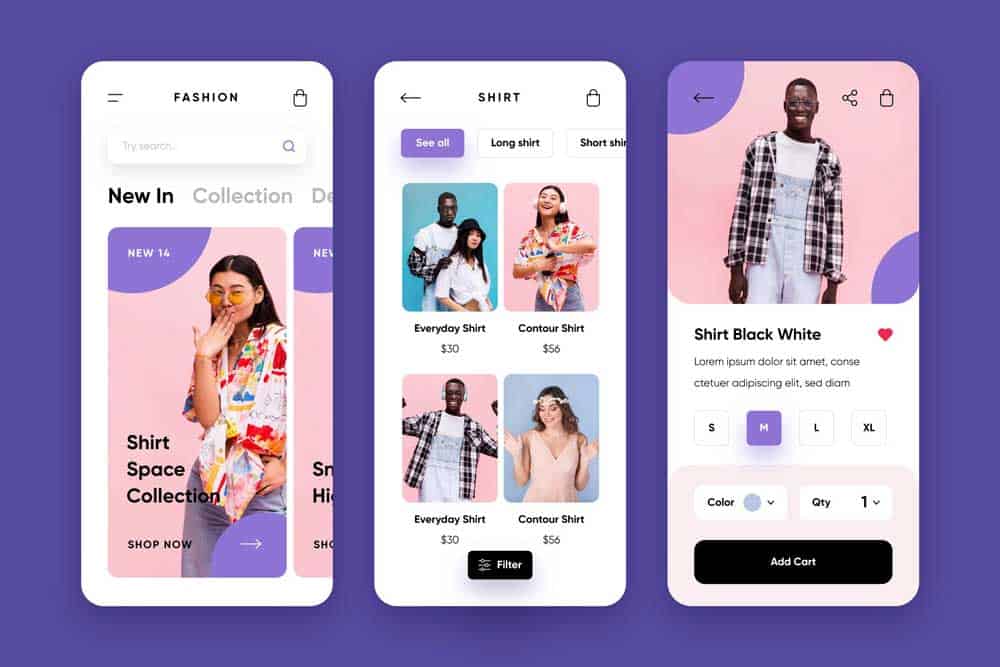
With the growing dominance of mobile users for online shopping, it would be a waste to miss out on this audience group. From 2023, there has been a decent growth of 20% in mobile ecommerce sales this year.
Over the years, shopping on mobile has become increasingly more convenient for Internet users. This demands merchants to make their mobile experience more enjoyable to improve engagement rates and their possibility of returning.
A mobile-optimized website should include responsive design, intuitive layouts, and touch-friendly features to enhance user experience. They should be able to navigate, read, and interact with your content easily while actively searching for your products.
Having a search bar on your front page provides quick access to available products in the store. Rather than browsing through product pages, this bar works best for those who know exactly what they want when visiting your website.
Understand that users who use the search bar often have a higher purchase intent of something specific. By enabling them to find what they need, you are more likely to convert visitors into paying customers and boost Shopify conversion rate optimization.
Regarding new visitors who have a lesser idea of what you have in store, this feature can generate autocomplete results or suggestions to help with product discovery. This is especially helpful in supporting stores with large product catalogs.
Online shoppers would be delighted to see a well-organized, clear menu structure. It enables an understanding of your website’s content and offerings, allowing buyers to discover the store without confusion.
A logical, intuitive layout simplifies navigation, making it easier for customers to select the categories they want to explore. If your shop offers many product and information pages, such a menu will reduce friction and speed up the shopping process.
Moreover, it has a direct impact on conversion rates since shoppers can locate exactly where their target products are and intrigued to make quicker purchasing decisions.
When potential buyers browse through product pages, they are interested in goods available in your store.
High-quality media is a must to make a good impression on potential buyers and improve Shopify conversion rate optimization. The more they understand your physical products’ appearance, the more likely they will purchase.
HD images and videos make your goods look reliable and professional. They prove that your business focuses on providing genuine value and building customer trust. Poorly shot visuals can reduce your credibility since people process photos faster than text.
By showcasing high-quality, detailed media, you set more explicit expectations for visitors. After seeing the item’s details, color, texture, etc., they are aware of how it looks and functions, reducing uncertainty and confusion.
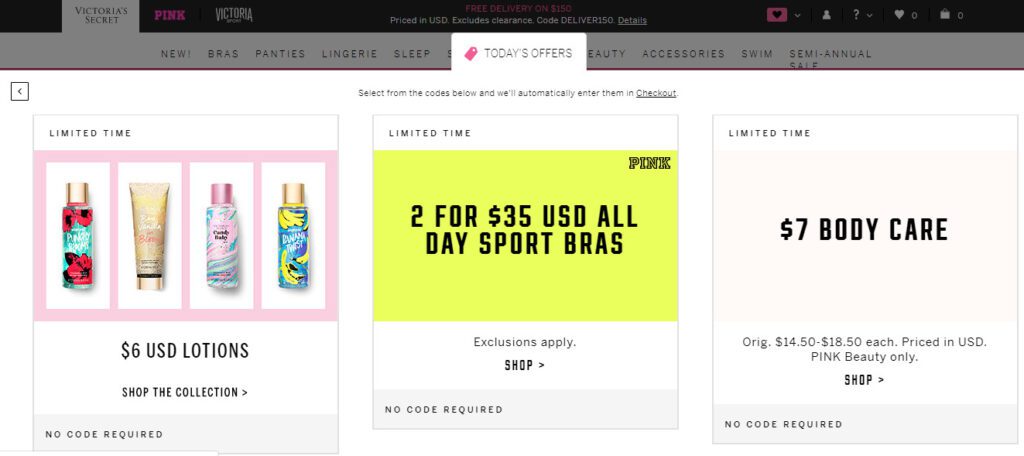
Apart from the homepage display, it is better to incorporate this time limit to specific product pages to increase the sense of urgency. This powerful sales strategy can drive immediate action and conversions as it compels visitors to make quick decisions.
Time-sensitive deals may present a clear deadline or stock limitation, which triggers the “fear of missing out” (FOMO). Customers will be prompted to take advantage of the promotions before they run out rather than hesitating or leaving the product pages.
You should offer such deals to promote specific products or clear inventory of slow-moving items. Compelling terms like “Sale ends in 8 hours” or “Only 5 left in stock” help move those goods faster by encouraging impulse purchases.
Online shopping can sometimes be risky. This is because customers are less aware of what they actually receive compared to what is displayed in the virtual display. Therefore, a reliable store should present high-quality product images clearly and concisely.
This directly influences customer engagement and trust building because they need to know what the item is and how it works. Your thoughtful description acts as a guide to educate them on its features and benefits, helping them make informed decisions.
When buyers understand what they will spend money on, they are less likely to be disappointed or misled and try to return the order. This means they trust the way you describe your goods and may continue to buy more in the future.
A trust badge is a small add-on that can have a strong impact on how customers view your store as part of Shopify conversion rate optimization. It signals visitors that your website is secure and legitimate, reassuring them that they can trust your business.
Trust badges matter because many potential buyers abandon their carts due to concerns over authenticity or security. Thus, badges like payment logos (e.g., PayPal, Mastercard, etc.) or SSL certification guarantee a high security.
Other trust badges include verified reviews and money-back guarantees. They prove that your goods or services are reliable and safe for purchase. They also influence hesitant shoppers by convincing them that others had a positive shopping experience.
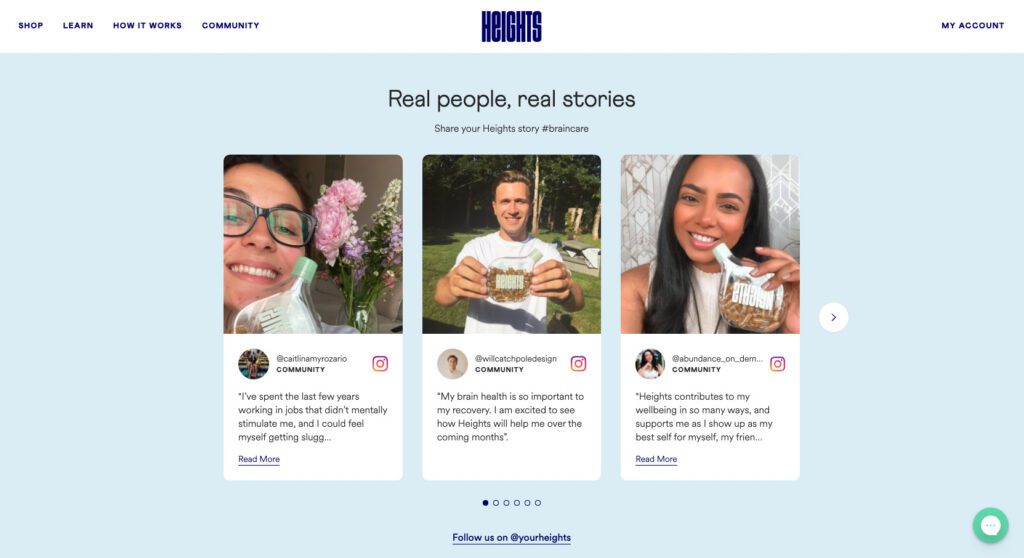
Displaying social proof and customer reviews on your product pages can instill trust in potential buyers.
New visitors tend to trust fellow customers more than the seller, so they need evidence that others were satisfied with the purchase. This helps ease their concerns as they can read some uses and features that are not obvious in the product description.
Such reviews from previous shoppers also address popular questions or doubts, swaying undecided visitors by enhancing their confidence and certainty in your business. Take advantage of these persuasive tools to help buyers see how your goods fit their needs.
With sitewide promotions on your homepage, you should offer specific discounts on product pages to catch attention. When people find an active deal while browsing the store, they can easily be converted to paying customers.
Trust us—most online buyers are interested in grabbing bargains, especially those with a time limit, to enjoy the feeling of a good deal. If a product or service is shown alongside an attractive discount, it will push hesitant customers to make prompt decisions.
BOGOS is a highly trusted third-party app that generates and manages Shopify discounts and promotions. The app consists of advanced discount rules that allow you to set up and track complex campaigns, increasing their appeal to boost sales.
This practice is ideal for boosting customer satisfaction since it enhances perceived value by “spending less but getting more.” This may also encourage customers to return for recurring sales in the future.
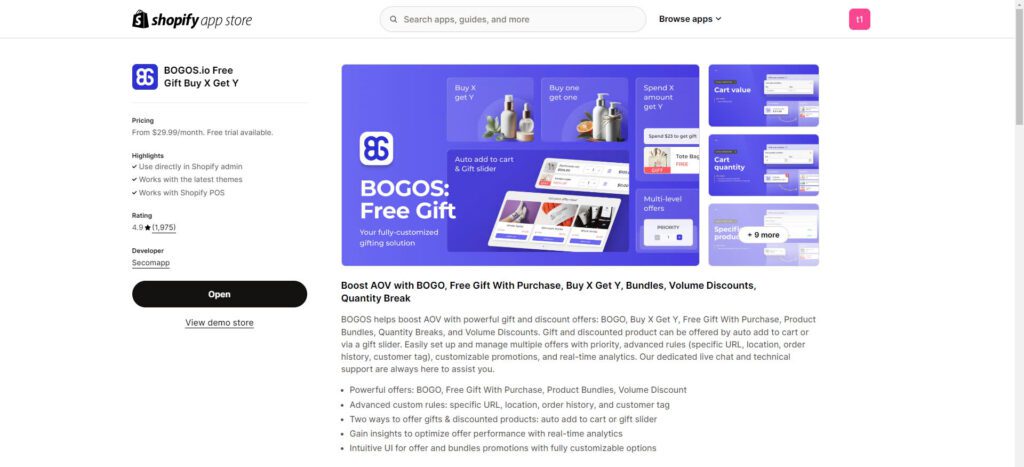
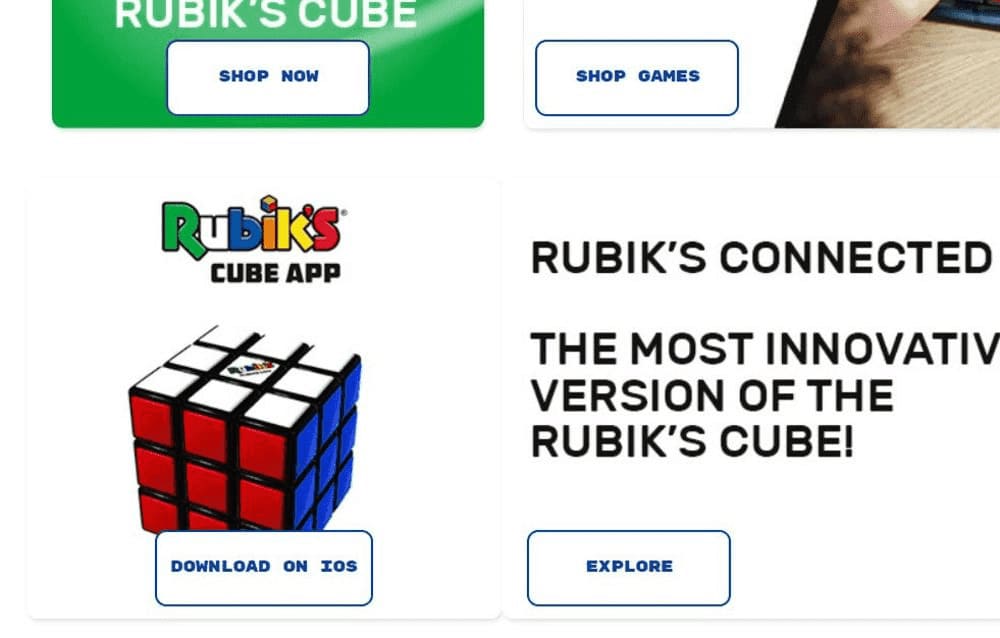
Determine which desired action you want your customers to take in your online store, even if it compels them to purchase or subscribe to your newsletter. Then, place these CTAs across your website and product pages to direct their behavior.
This is because you must tell visitors exactly what they must do next. Without strong CTAs, there is a high chance your buyers will be uncertain or confused about how to proceed, resulting in more drop-offs.
Making them bold, concise, and visible is the key to convincing CTAs for better Shopify conversion rate optimization. Popular examples are “Buy now” and “Add to cart,” which simplifies the shopping process for happy customers.
If customers encounter confusion or difficulty on your website, they should be provided with prompt help via an active live chat. This minimizes the risks of drop-offs, as they receive immediate answers to their inquiries instead of waiting for email or phone support.
Most shoppers prefer instant and personalized responses to their problems, which contributes to higher satisfaction and brand loyalty. Whether it is about product details or return policies, live chat can directly influence purchase decisions.
A tip is to combine human agents with an AI-powered chatbot to ensure 24/7 assistance. In case your agents are unavailable at the time, the chatbot can handle simple, common inquiries. It can also direct customers to helpful resources.
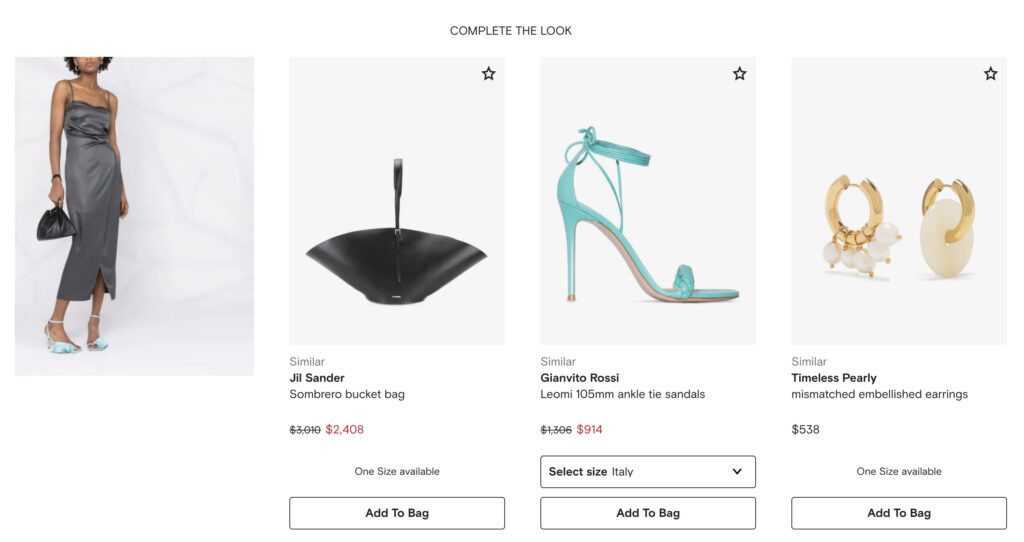
Upselling motivates customers to buy an upgraded or higher-end version of the item they are considering. While cross-selling offers complementary products to increase the order size. Either way, these methods can increase your average order value (AOV).
By recommending relevant add-ons and upgrades, you create a more tailored shopping experience. Customers would appreciate suggestions that complement their purchases, helping them discover products that meet their needs and improving their satisfaction.
This is also an effective way to introduce shoppers to products they may not have seen, especially those with less traffic independently but perfectly complement top-sellers. Showcasing relevant items will increase the visibility of your broad product catalog.
A progress bar and countdown timer are ideal tools for helping with Shopify conversion rate optimization because they show the availability of time-sensitive deals and stock levels. This visual representation can urge customers to grab the offers quickly.
If your product page consists of multi-step processes (e.g., bundling options, product customization, etc.), this bar lets users see where they are and what steps are left. Since they can track their progress, they will likely follow through and complete the order.
Furthermore, visual elements like a progress bar make the shopping journey more interactive and engaging. Shoppers can easily see whether they are close to earning an incentive or completing a purchase and be motivated to spend more or buy more items.
After adding everything they want to purchase to the cart and proceeding to the next step, it is time for the checkout page.
Some e-commerce stores require customers to create accounts to complete an order, which can become a barrier for impulse purchases or time-sensitive buyers. Most of the time, people do not want to remember another password just for online shopping.
That is why you should enable guest checkout to simplify this process and enhance their satisfaction. The easier it is for customers to buy your products, the happier they will be and the less likely they will abandon their cart.
This is especially true for first-time visitors because they may not feel comfortable registering before trying your service. Guest checkout is a good idea for evaluating your store without commitment, making it easier to convert new shoppers.
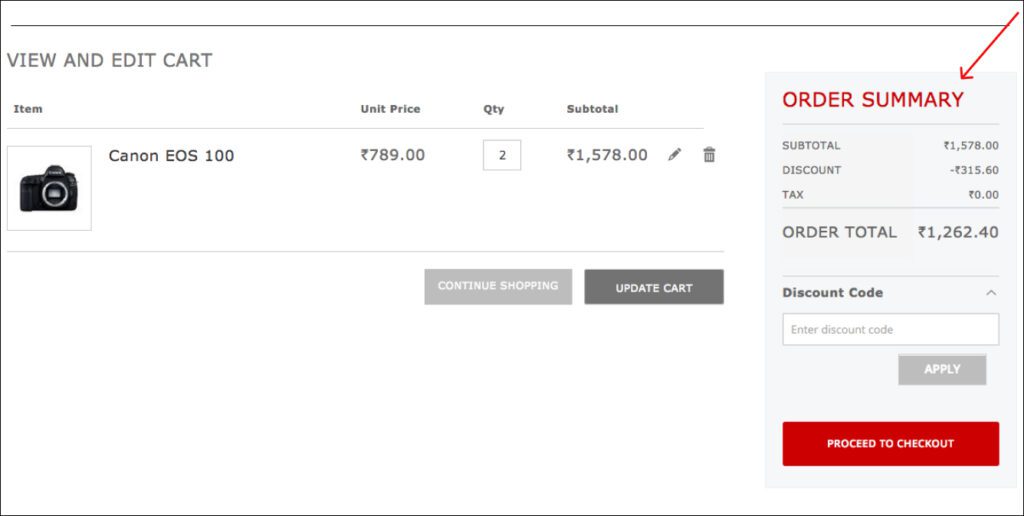
Processing returned orders is the last thing store owners want to do, so the best solution is to display the order summary and total cost at checkout. It ensures buyers that your shop is transparent in providing the final cost and everything related to the purchase.
A detailed order summary often includes product prices, shipping fees, discounts, and taxes—all clearly presented at checkout to reduce doubts about hidden charges. It also allows customers to double-check their products, quantities, variations, etc.
This helps avoid errors or accidental purchases by allowing buyers to make timely adjustments before finalizing the purchase. Subsequently, it decreases cart abandonment and return rates because customers are 100% sure of their decisions.
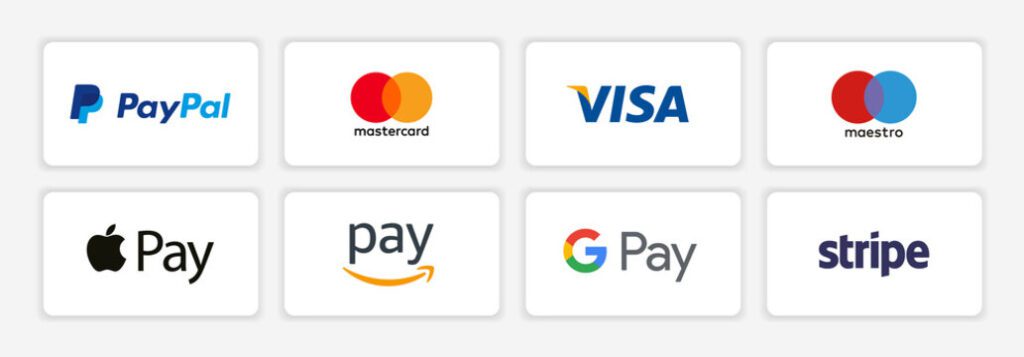
Different shoppers prefer different payment methods, which explains why providing the multi-payment feature benefits Shopify conversion rate optimization.
It helps cater to various customer preferences since some may prefer digital wallets like Apple Pay or PayPal, while others enjoy shopping online with credit/debit cards. Many are comfortable with similar payment options and, thus, more likely to finalize the order.
You can consider using Shopify POS to integrate multiple payment methods and offer a variety of options. Check out this Shopify POS review for more details on how it can improve your payment process.
One more thing is that diverse payment options can help boost international sales in your store, as each country and region has different preferences. Diversifying this allows access to the international market and expands your reach to global audiences.
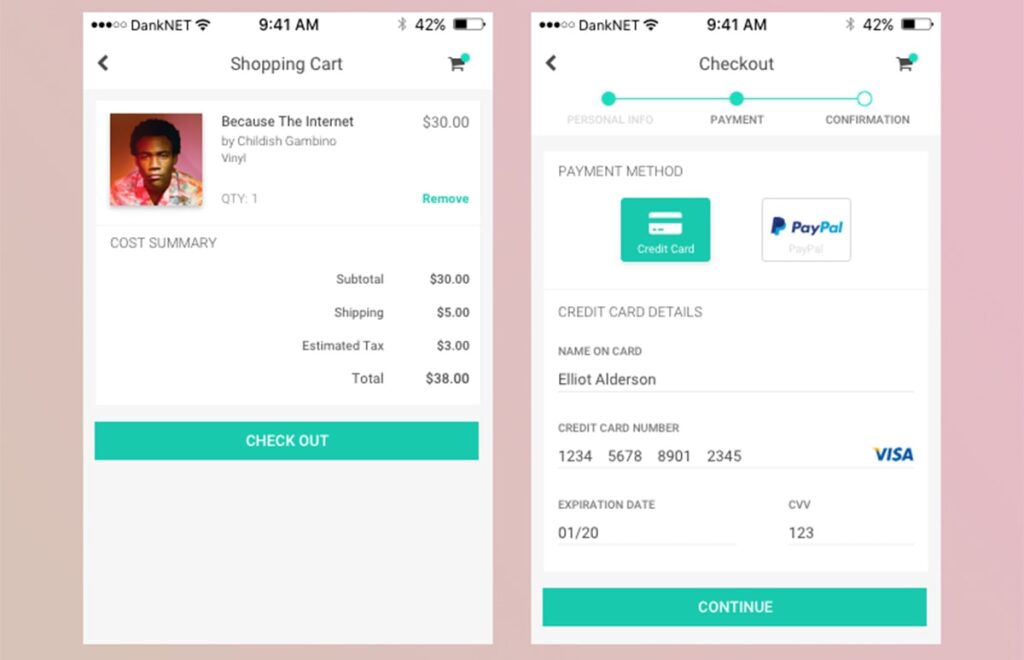
Due to the growing dominance of mobile shoppers, optimizing for mobile checkout is crucial to retain a large share of potential customers. If they can buy and pay for things easily on the phone, they will have a more enjoyable on-the-go shopping experience.
Since mobile screens are smaller than desktops, you need to streamline the checkout process on these devices to avoid customer frustration. When shoppers experience a quick and hassle-free checkout process, they are more likely to complete the order.
Try reducing the number of steps needed for mobile checkout with an intuitive and mobile-responsive design. This means optimizing all the buttons, forms, and images to load quickly on a smaller screen, enhancing customer engagement.
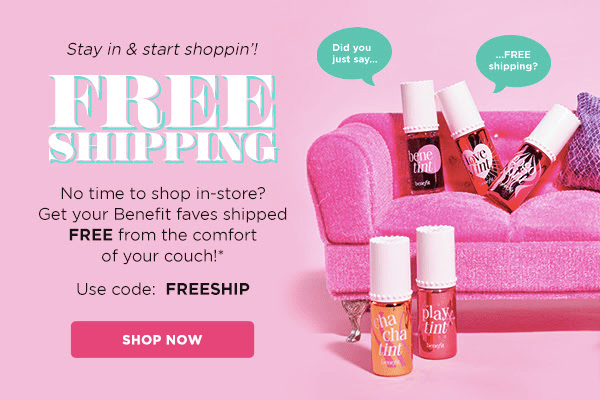
As much as it sounds odd, having to pay for (high) shipping fees might be a barrier that stops your customers from completing the purchase. Research has shown that 49% of shoppers abandon their carts after adding products due to unexpected delivery costs.
That is why most buyers are happier when being offered free shipping and more likely to follow through with a purchase. Since they see free shipping as a sign of goodwill from the seller, this strategy can directly increase your sales and boost conversion rates.
Of course, you should set up the minimum purchase threshold to qualify for free shipping. Not only does it encourage customers to add more items to their carts, but it also ensures balanced and healthy profit margins for your store.
The auto-fill feature at checkout aims to leverage customer experience by automating the process and bringing them convenience. Its primary goal is to reduce friction and make it easier to finalize purchases, boosting Shopify conversion rate optimization.
This function automatically fills in relevant details like personal, payment, and shipping information, saving customers from long and tedious checkout processes. It minimizes the steps needed to take during this stage to enhance customer satisfaction.
Thanks to this positive and automated experience, they will likely return to your store. In addition, modern auto-filling often comes with encryption and security, so buyers can store private data without re-entering sensitive details every time.
One drawback of online shopping is that customers might be disappointed with the products they receive in person, which may cause the package to be returned. That is why you should clarify your return and refund policy for better mutual understanding.
A transparent policy increases customer confidence since they know they can easily return unsatisfied products. If communicated well, these guidelines will be a safety net for buyers, reducing the fear of making wrong decisions and increasing conversion rates.
Highlighting your return and refund policy ensures shoppers understand how things work around your store, minimizing the risks of complaints and possible disputes. Plus, it enables your store to comply with consumer protection laws.
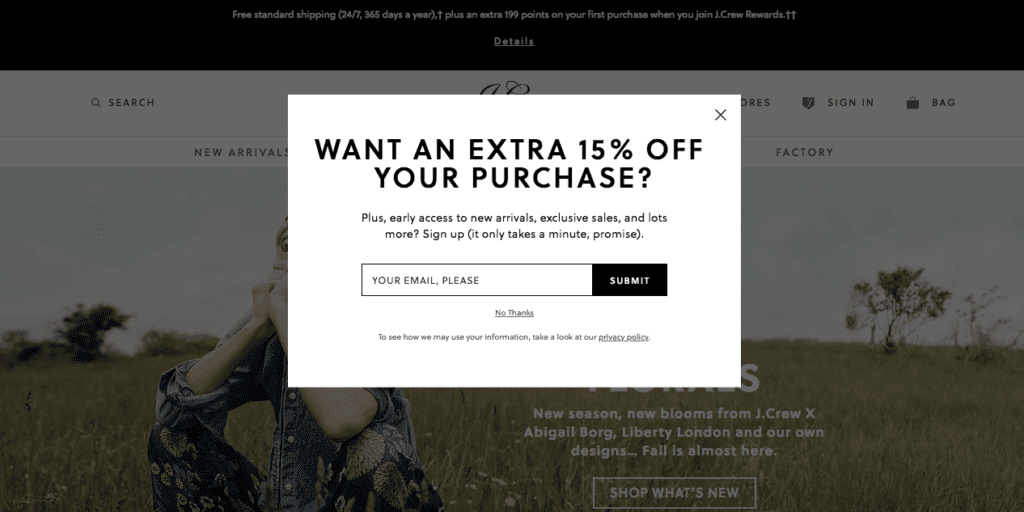
How do you handle customers who are about to leave the website without a purchase? To address this issue, many store owners initiate exit-intent pop-ups. Then, combine them with compelling messages or invitations to make use of the lead.
Most pop-ups for exit intentions offer special offers like last-minute discounts or free shipping, persuading buyers to stay and complete their orders. It secures potential lost sales and decreases bounce rates by preventing them from leaving too soon.
In some cases, several brands use this approach to get feedback on customer experience to improve the store. They also capture lead information by asking for email addresses before they leave, allowing merchants to nurture them later via email marketing.
Even when your customers leave their shopping carts, there is still a solution to retain them and contribute to Shopify conversion rate optimization. Abandon cart emails act as reminders for cart abandonment, motivating buyers to return and finalize the order.
This tactic specifically targets high-intent customers who have already shown interest in your products. They are probably hesitant for certain reasons and just need a little more encouragement via personalized emails, which is a great boost for purchase completion.
A smart tip to close the deal is offering extra incentives in these emails, such as free shipping or time-sensitive discounts. You can even utilize abandon cart emails to gather feedback via a short survey, helping you identify issues as to why they did not purchase.
A wise merchant should initiate other strategies alongside your website optimization efforts, which typically include off-site work.
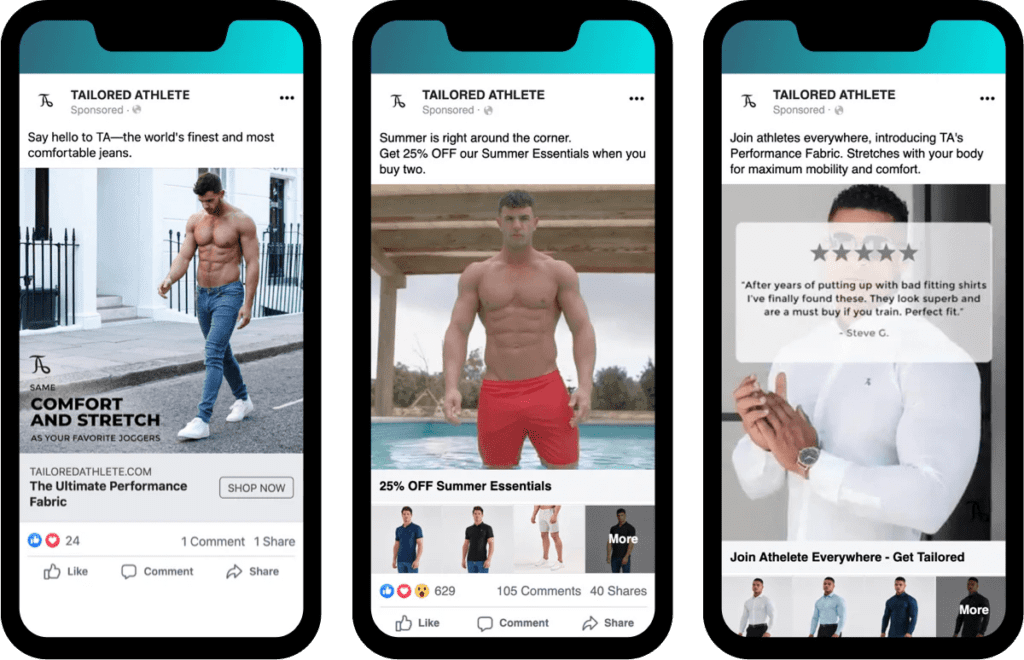
It is typical for online stores to run advertisements for product promotion, but how do retargeting ads work? These ads attract previously engaged visitors who did not take the required action, so merchants want to make a more personalized effort toward them.
Leaving the store without purchasing does not entirely mean the customer would not reconsider your products. Therefore, retargeting them with Facebook, Instagram, or Google Ads is highly beneficial for Shopify conversion rate optimization.
We recommend tailoring these ads based on customer behavior to better match their interests. To increase relevance, you should show retargeting ads for specific products or categories they explored.
Furthermore, this tactic is cost-effective since it yields better returns on ad spend compared to attracting new audiences.
Search engine optimization (SEO) is essential for increasing conversion rates because it improves brand visibility, drives organic traffic, and potentially boosts sales.
Good SEO scores help your page reach higher rankings on well-known search engines like Google, allowing more people to discover the store when they search for products you sell. This high ranking leads to more visitors and clicks without spending on ads.
In addition, online users tend to perceive high-ranked websites as more credible and trustworthy. Optimizing SEO enhances brand perception and improves customer loyalty.
And unlike paid ads that stop attracting traffic when the campaign is inactive, SEO efforts guarantee to pay off over time. It yields long-term traffic without continuous ad spending, delivering higher returns on investment (ROI) within a budget.
Why only promote the brand yourself when you can take advantage of the resourceful market of online influencers? It has been proven that 85% of marketers trust influencer marketing to be a productive approach, which is applicable to Shopify conversion rate optimization.
This is because influencers have established a group of audiences that trust their suggestions, making it easier to encourage them to check out your store. Moreover, people tend to trust recommendations from influencers more than traditional ads.
Most influencers are active on social media platforms, such as Facebook, YouTube, Instagram, X, etc. Find those who align with your brand values and perspective, as they can target similar audiences and you can drive quality traffic from their followers.
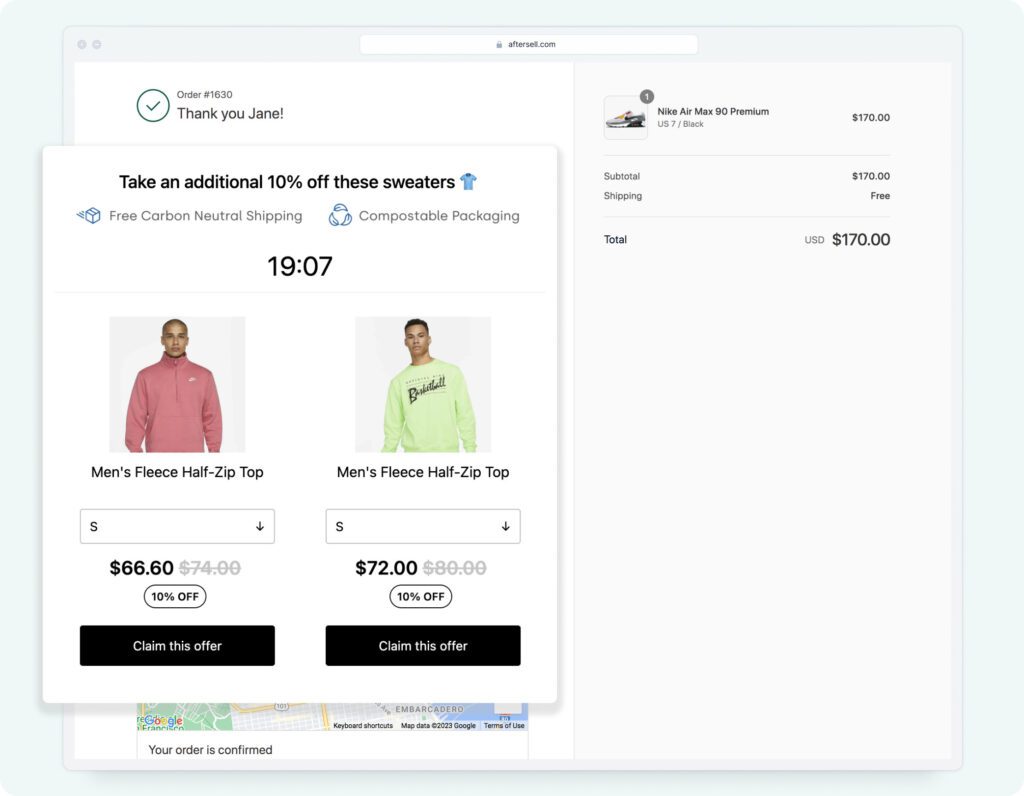
The thank you page is the last location your visitors arrive after completing a purchase.
At this point, several key factors should be focused on for Shopify conversion rate optimization, including product upselling and customer engagement.
This page helps continue your relationship with customers post-purchase, specifically through cross-selling and upselling. Offer an upgraded version or complementary items to their completed orders to generate more sales and boost conversion rates.
In some cases, you can give them discount codes to encourage future purchases, enhancing customer engagement and retention, as well as their loyalty to your brand.
Another way to utilize the thank you page is to gather feedback and reviews, which is crucial to understanding how shoppers feel about their shopping experience at your store and making timely adjustments to increase their satisfaction.
There are countless influential aspects that can directly affect your Shopify conversion rate optimization, requiring you to pour effort and oversee most of them to ensure a seamless and effective performance.
Of course, a merchant can hardly cover all listed elements to scale their business, so you must experiment with possible factors and decide on what your shop really needs. That way, you can focus solely on essential aspects and try your best to optimize them.
Remember that every part of the customer journey is utilizable, so do not miss out on any steps to leverage your Shopify store!
The average conversion rate in the eCommerce industry is around 2-4%. However, depending on the niche, marketing strategy, and traffic quality, high-performing stores can achieve higher conversion rates from 4 to 8% or more.
A slow-loading website often results in high bounce rates and lost sales. A one-second delay in page load speed can lead to a 7% decrease in conversions.
You should use caching, optimize image quality, and consider upgrading to faster hosting to improve load times.
Yes, you should use pop-ups, but in a strategic way. It is ideal to use pop-ups to offer cart abandonment reminders, first-time discounts, and email subscriptions.
However, make sure they are not intrusive to avoid impacting user experience.


If you are heading into 2026 planning bigger campaigns, now is the right time to tighten your onsite conversion....

If you are serious about scaling, there comes a time when DIY fixes and late-night Googling no longer suffice....

In 2025, retail eCommerce sales are estimated to exceed $3.6 trillion, with approximately 2.8 billion people worldwide making at...
